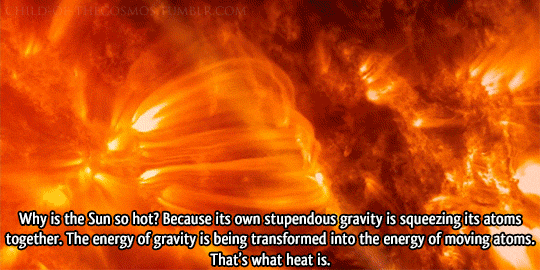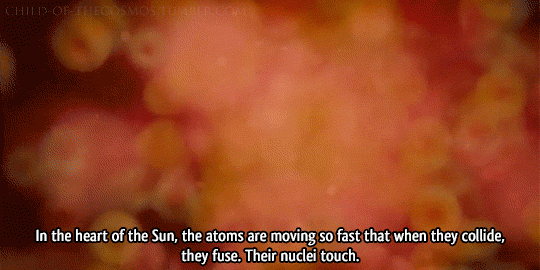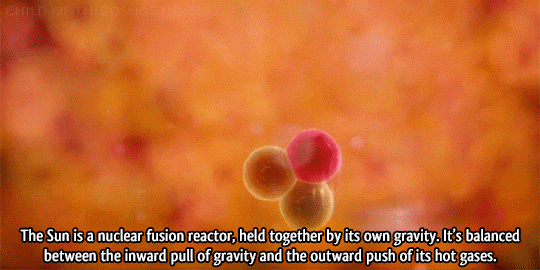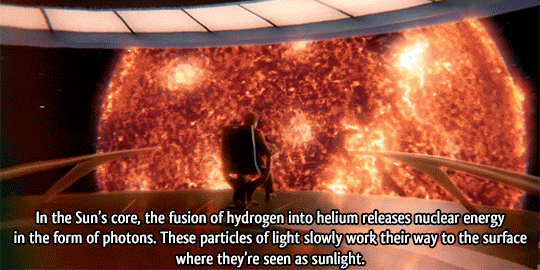The Martian Movie And Our Real Journey To Mars
The Martian Movie and Our Real Journey to Mars
The Martian movie is set 20 years in the future, but here at NASA we are already developing many of the technologies that appear in the film. The movie takes the work we’re doing and extends it into fiction set in the 2030s, when NASA astronauts are regularly traveling to Mars and living on the surface. Here are a few ways The Martian movie compares to what we’re really doing on our journey to Mars:
Analog Missions

MOVIE: In the film, Astronaut Mark Watney is stranded on the Red Planet.
REALITY: In preparation for sending humans to Mars, we have completed one of the most extensive isolation missions in Hawaii, known as HI-SEAS. The goal of this study was to see how isolation and the lack of privacy in a small group affects social aspects of would-be explorers. The most recent simulation was eight months long, and the next mission is planned to last a year.
Spaceport

MOVIE: The Martian movie launches astronauts on the Aries missions from a refurbished and state of the art space center.
REALITY: Currently, the Ground Systems Development and Operations’ primary objective is to prepare the center to process and launch the next-generation vehicles and spacecraft designed to achieve our goals for space exploration. We are not only working to develop new systems, but also refurbishing and upgrading infrastructure to meet future demands.
Deep Space Propulsion

MOVIE: In the film, the astronauts depart the Red Planet using a propulsion system know as the Mars Ascent Vehicle (MAV).
REALITY: We are currently developing the most powerful rocket we’ve ever built, our Space Launch System (SLS). Once complete, this system will enable astronauts to travel deeper into the solar system than ever before! The RS-25 engines that will be used on the SLS, were previously utilized as the main engine on our space shuttles. These engines have proven their reliability and are currently being refurbished with updated and improved technology for our journey to Mars.
Mission Control

MOVIE: In the movie, Mission Control operations support the Aries 3 crew.
REALITY: On our real journey to Mars, Mission Control in Houston will support our Orion spacecraft and the crew onboard as they travel into deep space.
Habitat

MOVIE: The artificial living habitat on Mars in The Martian movie is constructed of industrial canvas and contains an array of life support systems.
REALITY: The Human Exploration Research Analog (HERA), formerly known as the Deep Space Habitat, is a three-story module that was designed and created through a series of university competitions. Studies conducted in habitat mockups will allow us to evolve this technology to create a reliable structures for use on Mars.
Rover

MOVIE: The characters in the film are able to cruise around the Red Planet inside the Mars Decent Vehicle (MDV).
REALITY: We are currently developing a next generation vehicle for space exploration. Our Mars Exploration Vehicle (MEV) is designed to be flexible depending on the destination. It will have a pressurized cabin, ability to house two astronauts for up to 14 days and will be about the size of a pickup truck.
Harvest

MOVIE: Astronaut Mark Watney grows potatoes on Mars in The Martian movie.
REALITY: We’re already growing and harvesting lettuce on the International Space Station in preparation for deep space exploration. Growing fresh food in space will provide future pioneers with a sustainable food supplement, and could also be used for recreational gardening during deep space missions.
Spacesuit

MOVIE: The spacesuit worn by astronauts in the film allows them to work and function on the surface of Mars, while protecting them from the harsh environment.
REALITY: Prototypes of our Z-2 Exploration Suit are helping to develop the technologies astronauts will use to live and work on the the Martian surface. Technology advances in this next generation spacesuit would shorten preparation time, improve safety and boost astronaut capabilities during spacewalks and surface activities.
More Posts from Lanas-own-blog and Others






The Atom: Part 4 of 5 (Part 1, Part 2, Part 3) Episode 6: Deeper, Deeper, Deeper Still, Cosmos: A SpaceTime Odyssey








An Adaptable Species: Part 2 of 4 (Part 1) Episode 11: The Immortals, Cosmos: A SpaceTime Odyssey


Fill your void

Incredible “EPIC” View Of The Moon Passing In Front Of The Earth
This is real, folks. It is not a computer-generated animation. NASA’s DSCOVR (Deep Space Climate Observatory) satellite took these incredible shots on July 16 using its Earth-facing EPIC camera from its vantage point between the Earth and the Sun, a million miles away!
DSCOVR sits at what’s known as the L1 Lagrangian point, where the gravitational pull of the Earth and Sun balance out in such a way that satellites positioned there can remain in stable orbit while using minimal energy:

Image: NASA/NOAA
This view of the far side of the Moon reminds us that it is anything but dark. The Moon is tidally locked, meaning that we see the same face all the time, but the sun regularly shines on the side that we don’t see (we’re just seeing a new or crescent moon when that happens). The far side also lacks the dark plains, or maria, that texture the Earth-facing side, made of basalt laid down by ancient lunar lava flows, reminding us that our lunar satellite has a complex geologic history:
The One-Year Mission
First off, what is the One-Year Crew? Obviously, they’re doing something for a year, but what, and why?
Two crew members on the International Space Station have just met the halfway point of their year in space. NASA Astronaut Scott Kelly and Russian Cosmonaut Mikhail Kornienko are living in space for 342 days and will help us better understand the effects of microgravity on the human body.
Why 342 days and not 365? Thought you might ask. Due to crew rotation schedules, which involve training timelines and dictate when launches and landings occur, the mission was confined to 342 days. Plenty of time to conduct great research though!

The studies performed throughout their stay will yield beneficial knowledge on the medical, psychological and biomedical challenges faced by astronauts during long-duration spaceflight.
The weightlessness of the space environment has various effects on the human body, including: Fluid shifts that cause changes in vision, rapid bone loss, disturbances to sensorimotor ability, weakened muscles and more.
The goal of the One-Year Mission is to understand and minimize these effects on humans while in space.
The Twins Study

A unique investigation that is being conducted during this year in space is the Twins Study. NASA Astronaut Scott Kelly’s twin brother Mark Kelly will spend the year on Earth while Scott is in space. Since their genetic makeup is as close to identical as we can get, this allows a unique research perspective. We can now compare all of the results from Scott Kelly in space to his brother Mark on Earth.
But why are we studying all of this? If we want to move forward with our journey to Mars and travel into deep space, astronauts will need to live in microgravity for long periods of time. In order to mitigate the effects of long duration spaceflight on the human body, we need to understand the causes. The One-Year mission hopes to find these answers.
Halfway Point

Today, September 15 marks the halfway point of their year in space, and they now enter the final stretch of their mission.
Here are a few fun tidbits on human spaceflight to put things in perspective:
1) Scott Kelly has logged 180 days in space on his three previous flights, two of which were Space Shuttle missions.
2) The American astronaut with the most cumulative time in space is Mkie Fincke, with 382 days in space on three flights. Kelly will surpass this record for most cumulative time in space by a U.S. astronaut on October 16.
3) Kelly will pass Mike Lopez-Alegria’s mark for most time on a single spaceflight (215 days) on October 29.
4) By the end of this one-year mission, Kelly will have traveled for 342 days, made 5,472 orbits and traveled 141.7 million miles in a single mission.
Have you seen the amazing images that Astronaut Scott Kelly has shared during the first half of his year in space? Check out this collection, and also follow him on social media to see what he posts for the duration of his #YearInSpace: Facebook, Twitter, Instagram.
Make sure to follow us on Tumblr for your regular dose of space: http://nasa.tumblr.com



Engineers are preparing to test the parachute system for NASA’s Orion spacecraft at the U.S. Army Yuma Proving Ground in Yuma, Arizona. During the test, planned for Wednesday, Aug. 26, a C-17 aircraft will carry a representative Orion capsule to 35,000 feet in altitude and then drop it from its cargo bay. Engineers will test a scenario in which one of Orion’s two drogue parachutes, used to stabilize it in the air, does not deploy, and one of its three main parachutes, used to slow the capsule during the final stage of descent, also does not deploy. The risky test will provide data engineers will use as they gear up to qualify Orion’s parachutes for missions with astronauts. On Aug. 24, a C-17 was loaded with the test version of Orion, which has a similar mass and interfaces with the parachutes as the Orion being developed for deep space missions but is shorter on top to fit inside the aircraft.

Pickering’s Triangle
-
 round-hatches-are-terrifying reblogged this · 9 months ago
round-hatches-are-terrifying reblogged this · 9 months ago -
 round-hatches-are-terrifying liked this · 9 months ago
round-hatches-are-terrifying liked this · 9 months ago -
 littlealexcub reblogged this · 10 months ago
littlealexcub reblogged this · 10 months ago -
 lockedndenied liked this · 1 year ago
lockedndenied liked this · 1 year ago -
 rmarts liked this · 1 year ago
rmarts liked this · 1 year ago -
 simpforsebastianstan06 liked this · 3 years ago
simpforsebastianstan06 liked this · 3 years ago -
 kaseysgirl86-blog liked this · 5 years ago
kaseysgirl86-blog liked this · 5 years ago -
 luminoussphereofplasma reblogged this · 6 years ago
luminoussphereofplasma reblogged this · 6 years ago -
 cityhorizons liked this · 6 years ago
cityhorizons liked this · 6 years ago -
 lemon-sodapaws liked this · 6 years ago
lemon-sodapaws liked this · 6 years ago -
 cutekirk reblogged this · 6 years ago
cutekirk reblogged this · 6 years ago -
 carielle6 reblogged this · 6 years ago
carielle6 reblogged this · 6 years ago -
 jarmilatblr liked this · 6 years ago
jarmilatblr liked this · 6 years ago -
 dazzlingdianavera liked this · 6 years ago
dazzlingdianavera liked this · 6 years ago -
 itsdragonfire13 liked this · 7 years ago
itsdragonfire13 liked this · 7 years ago -
 moonnightlight liked this · 7 years ago
moonnightlight liked this · 7 years ago -
 rhaenyratargaryendefender liked this · 7 years ago
rhaenyratargaryendefender liked this · 7 years ago -
 callmoiwhatuwant reblogged this · 7 years ago
callmoiwhatuwant reblogged this · 7 years ago -
 starfaringships reblogged this · 7 years ago
starfaringships reblogged this · 7 years ago -
 testingroundforstuff reblogged this · 7 years ago
testingroundforstuff reblogged this · 7 years ago -
 og-swanky liked this · 7 years ago
og-swanky liked this · 7 years ago -
 trigrerhiden liked this · 7 years ago
trigrerhiden liked this · 7 years ago -
 myceliumnb liked this · 7 years ago
myceliumnb liked this · 7 years ago -
 kagemushakosuke reblogged this · 7 years ago
kagemushakosuke reblogged this · 7 years ago -
 kagemushakosuke liked this · 7 years ago
kagemushakosuke liked this · 7 years ago -
 awesomeman281 liked this · 7 years ago
awesomeman281 liked this · 7 years ago
I've had lots of blogs in the past, but this one I'm actualy excited to share with people.
68 posts